Analysis by Keith Rankin.
Here we see charts of the same ten western tourist countries of Europe (refer to my Travel Warning: Excess Summer Deaths in Europe, 5 Oct 2022). It is important to note from the outset that ‘reported death’ figures have become increasingly unreliable. And reported cases are now unreliable indicators of the size of a covid outbreak; they do indicate the timing of covid waves, however, albeit with increasing time lags relative to the date of infection. The most reliable data is ‘excess deaths’. (Indeed Michael Baker has recently taken to citing this measure; see NZ Herald 16 October Covid19 Omicron outbreak; Another Wave.)
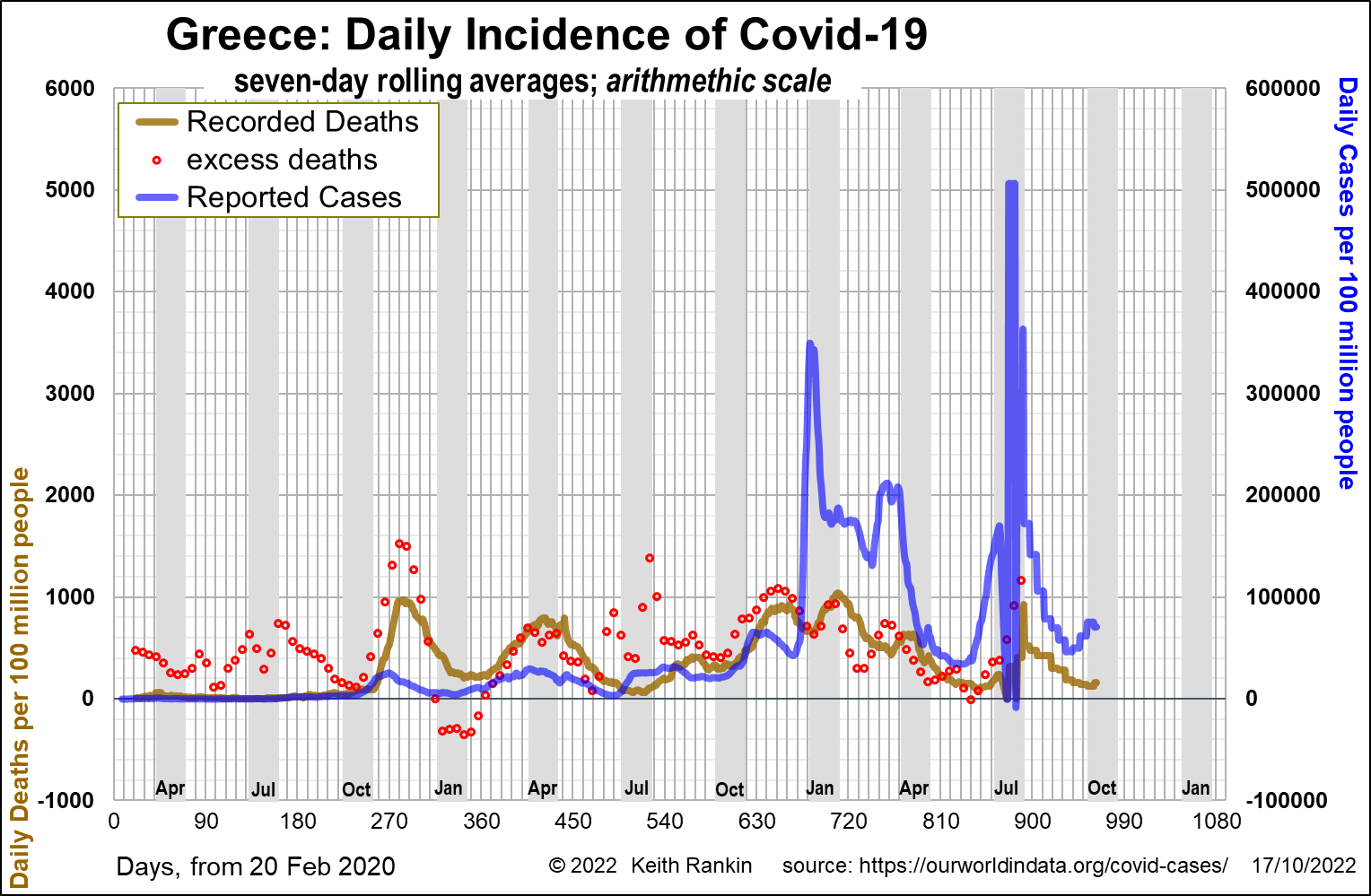
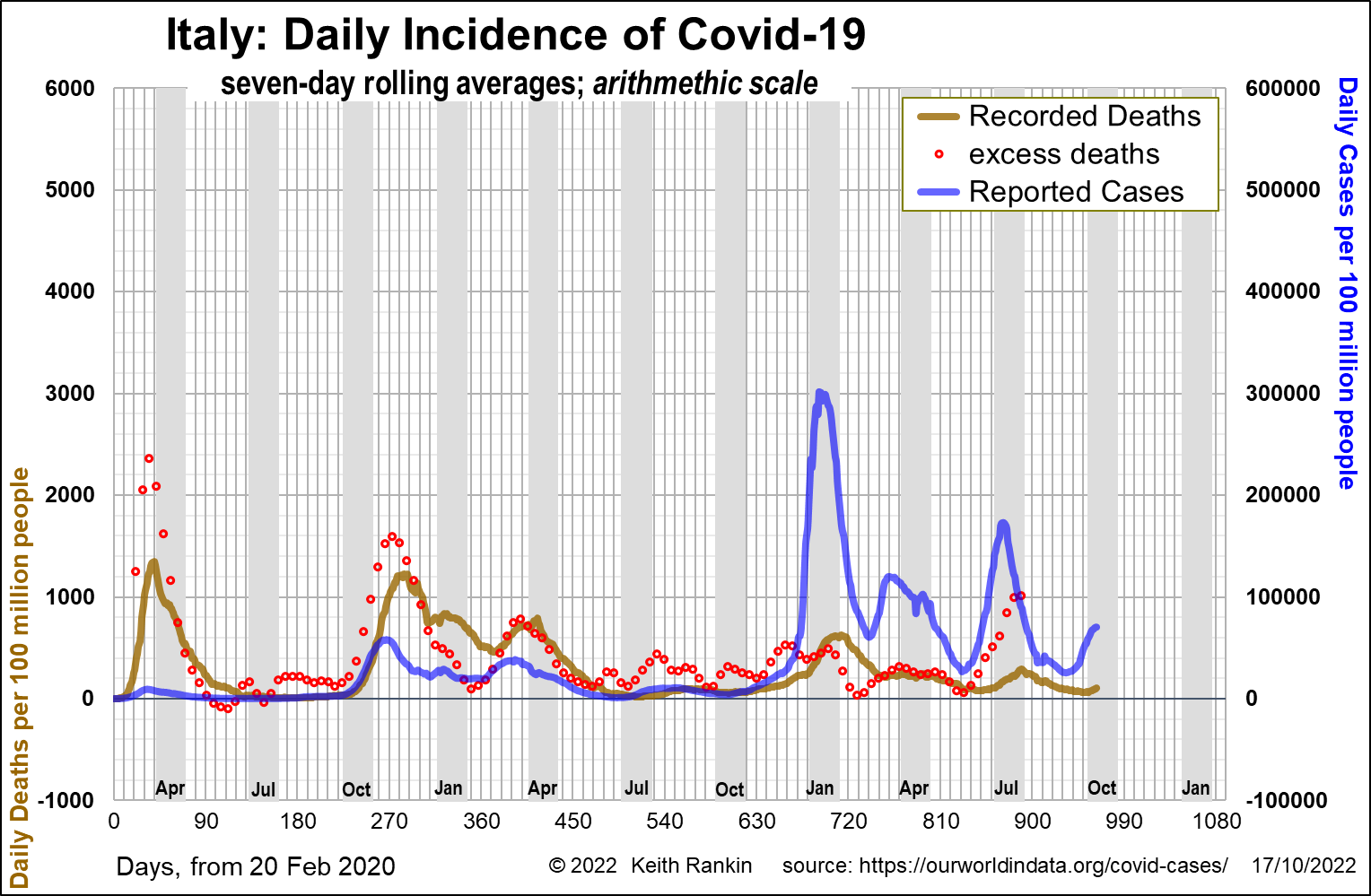
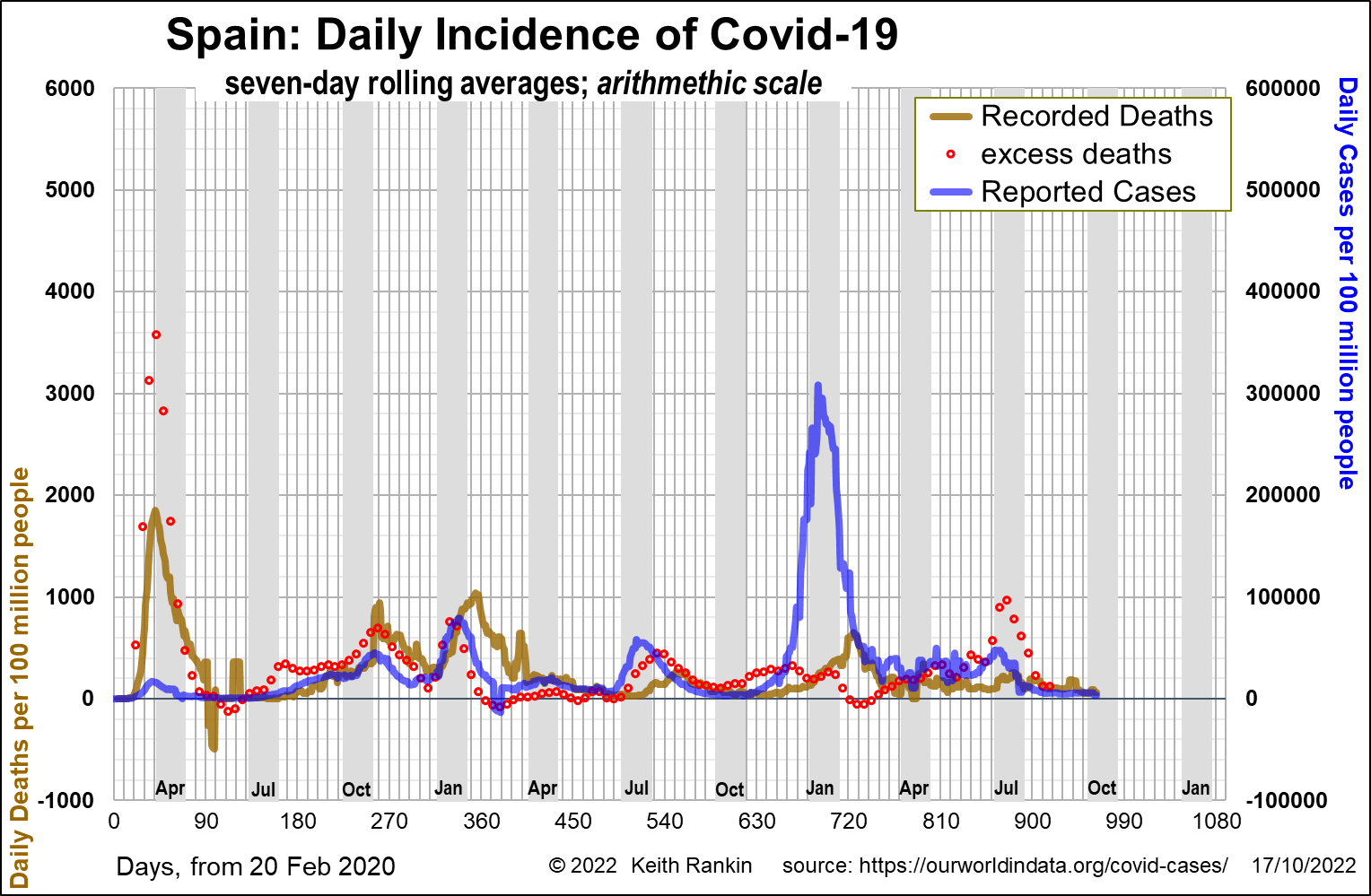
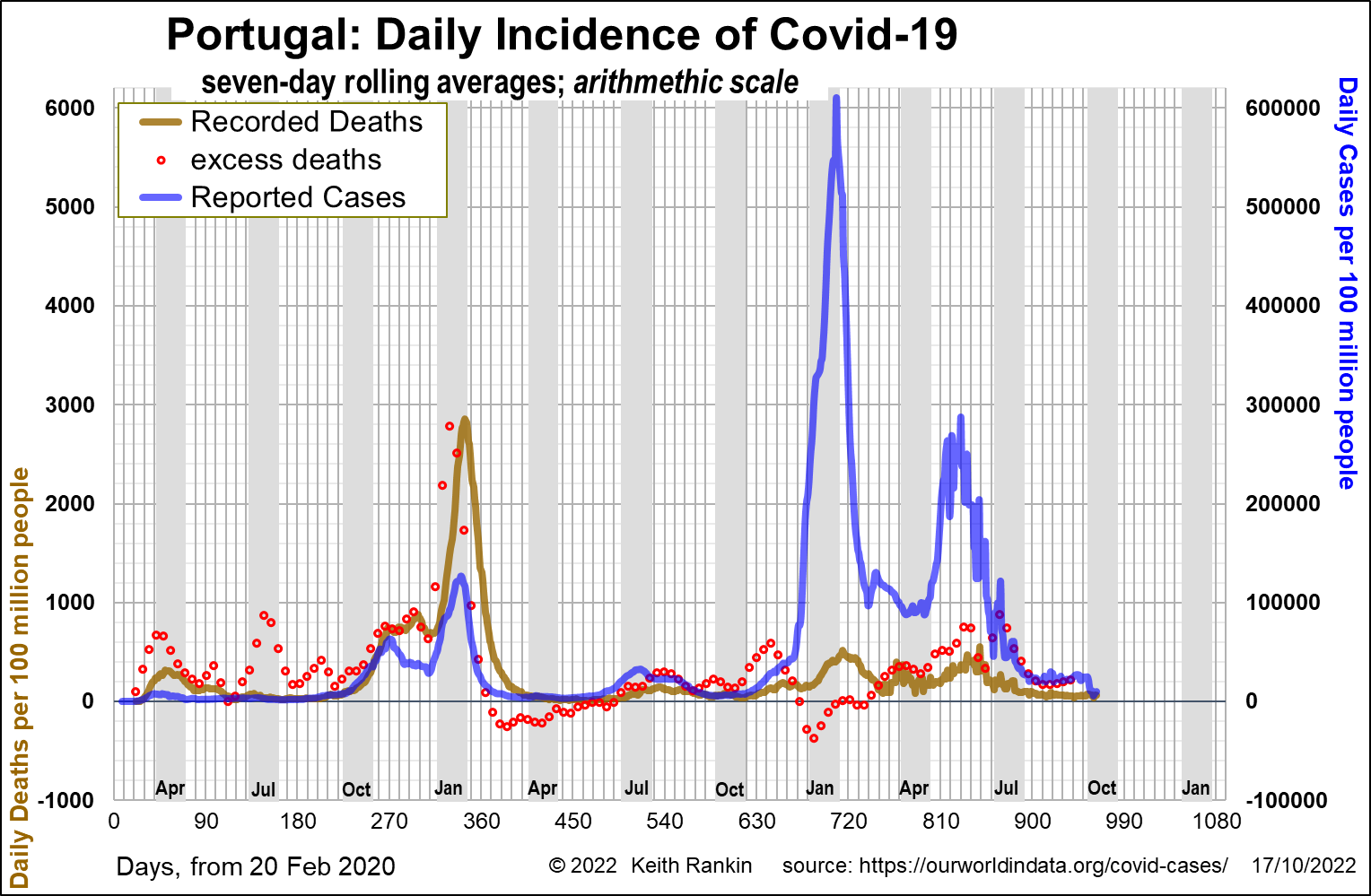
The Mediterranean tourist countries most popular with English-speaking visitors are shown first. All charts are to the same scale. We start with Greece this time.
Greece is one country that, using reported covid data, did not seem to be impacted much until the very end of 2020. However excess deaths in 2020 do suggest that there was a summer wave of Covid19; in addition, Greece was suffering excess deaths from influenza in the beginning months of the covid pandemic. The chart for Greece is quite dramatic-looking in 2022, with a significant death-wave in July (almost certainly continuing into August). We note that, re cases, July is worse than August; this represents the peak of American tourism into Greece, with intra-European vacations peaking in August.
Moving west to Italy, we see again the substantial covid death wave in July 2022. And we see, more clearly than Greece, the most recent (autumn) wave. This may be the wave of greatest impact, worldwide. Moving on to Spain, we see that the July death wave there is Spain’s highest covid death-wave since March 2020. And, by looking at reported cases, this July wave of excess deaths is clearly attributable to Covid19. (Note that 1,000 daily deaths per 100 million people is the same as 10 daily deaths per million; equivalent to 50 daily deaths in New Zealand. Indeed some of these deaths may be New Zealand tourists in Spain.)
Finally for South Europe, in the far southwest we see that Portugal had a bigger autumn wave of Covid19 (May) than elsewhere, while also catching the July wave early. Its July 2022 peak is as big as (or bigger than) its three 2020 peaks.
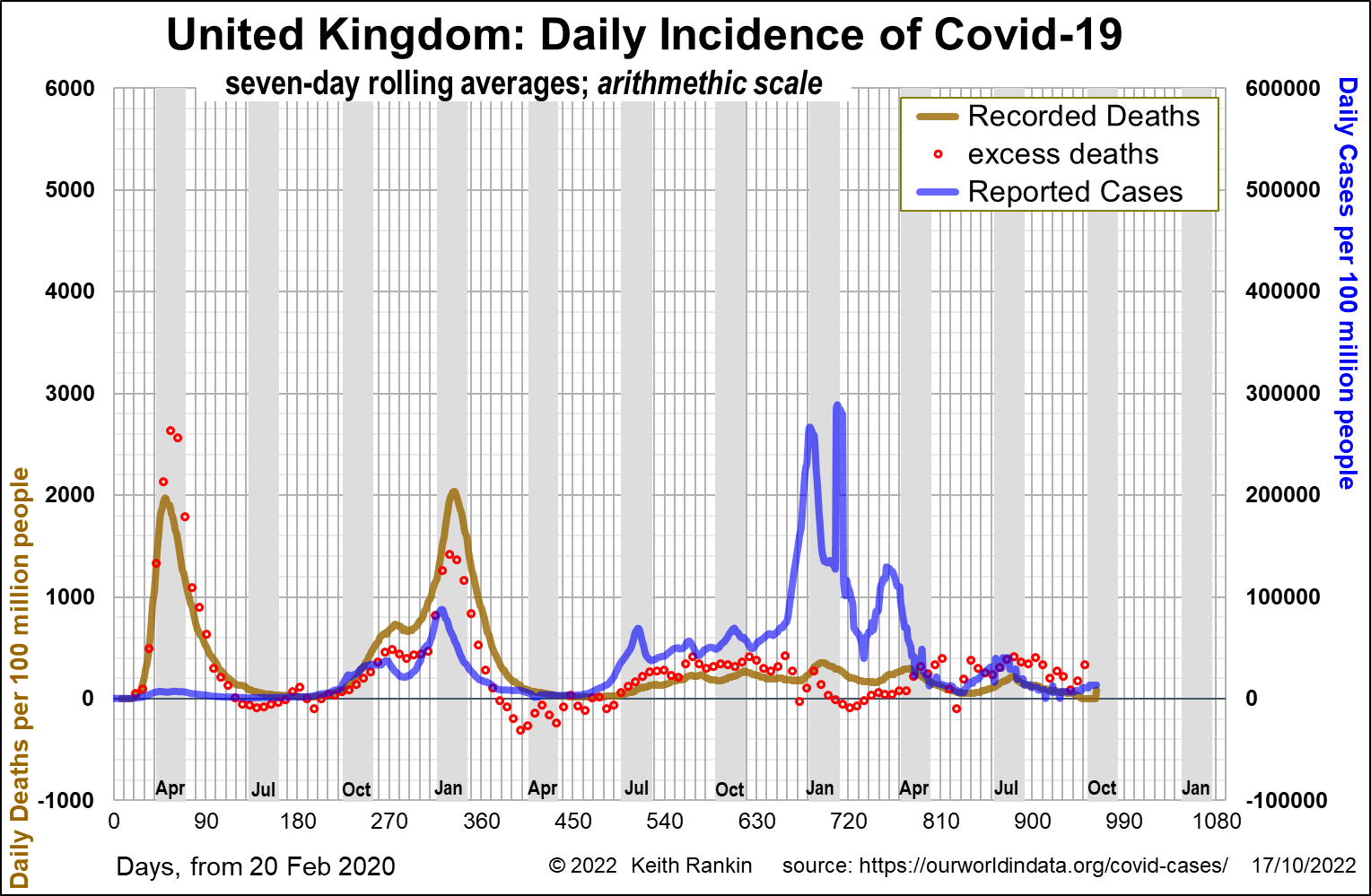
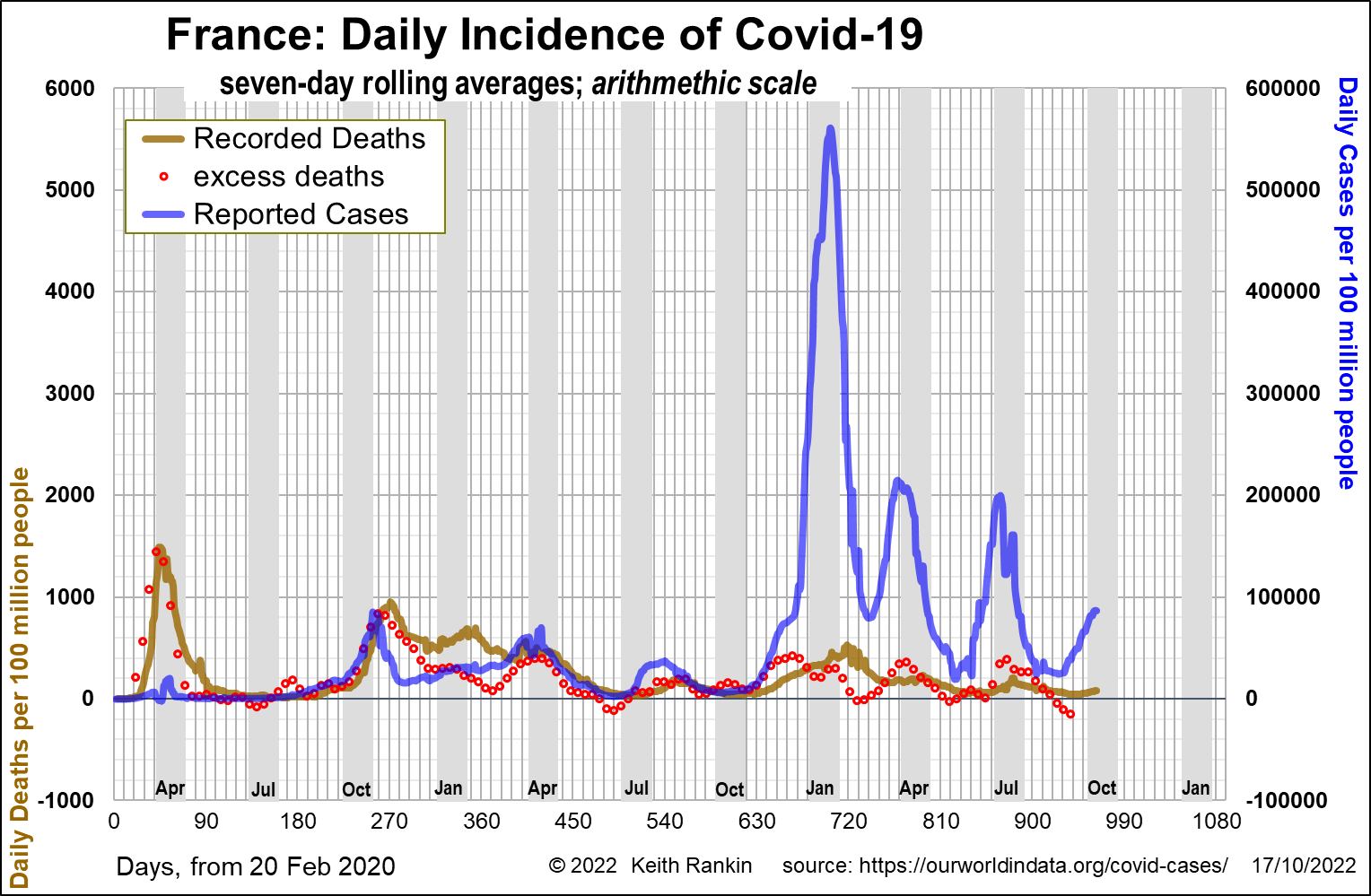
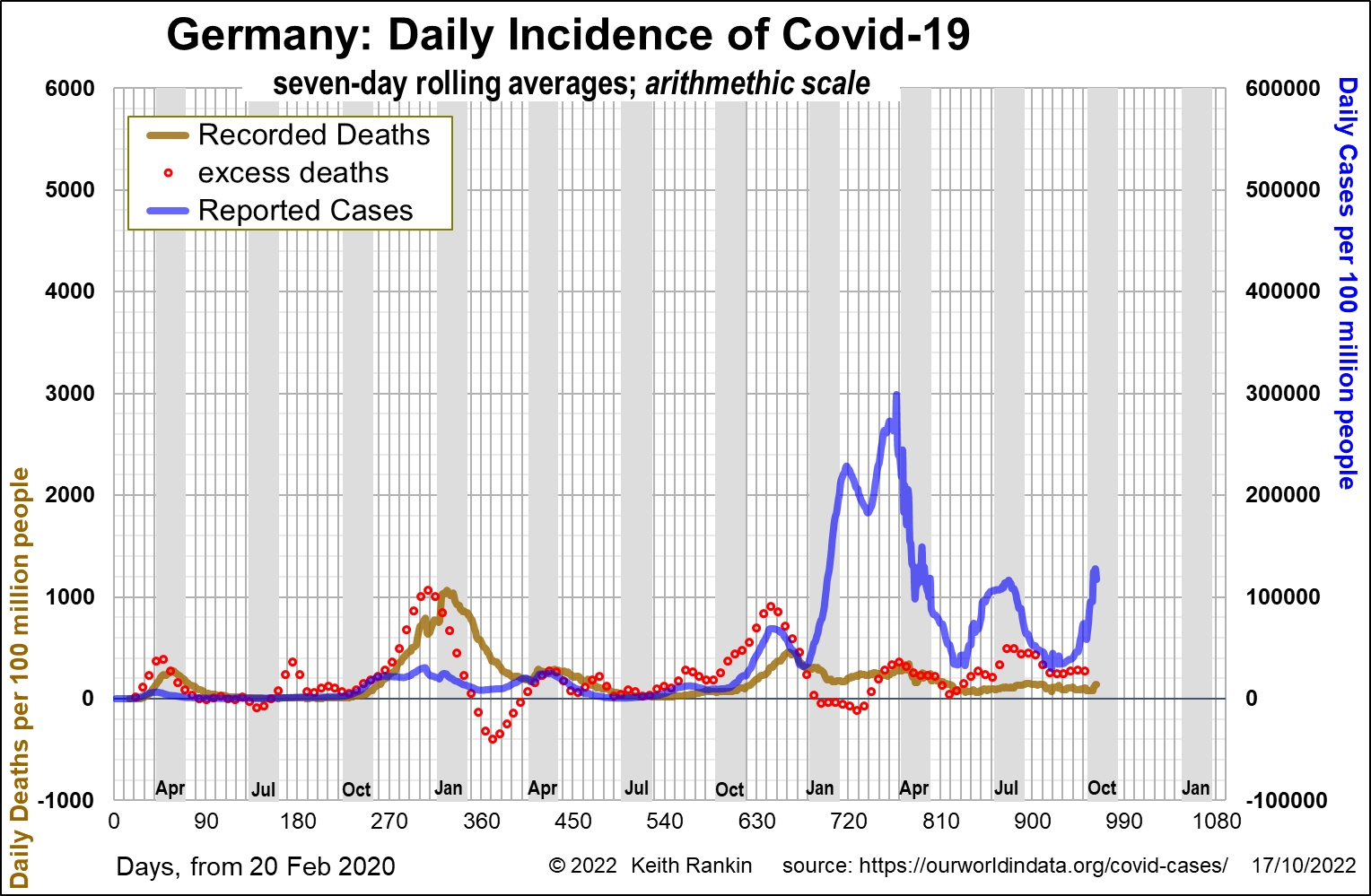
Looking at West Europe’s ‘big three’, the UK has had smaller summer peaks than the Mediterranean countries, probably because the ratio of visitors to residents is much lower than in (say) Greece and Italy. But we do see a clear rise in cases in June, meaning that the actual rise in cases will have been in May, when the summer tourism season in Britain gets underway. And excess daily deaths have averaged three in a million since May, equivalent in New Zealand to 2,700 pandemic deaths over a six-month period. We also note that these deaths occur in a context where many of the most vulnerable people had died in earlier covid waves.
France represents the high point of the immunity gradient, where many cases translate to relatively few domestic deaths; but where visitors can expect to be especially vulnerable. We see clear covid death peaks in April (when the French tourist season is well under way) and again in July, the peak month for English-speaking tourists. And, like Italy, we see that the latest wave is well underway.
Germany has seen a bigger covid death wave in the later summer; and we note that reported cases in Germany precede deaths, which is what happens in a country with an efficient reporting system. The latest wave of cases is prominent in Germany; deaths will come this month and next, not unlike 2021.
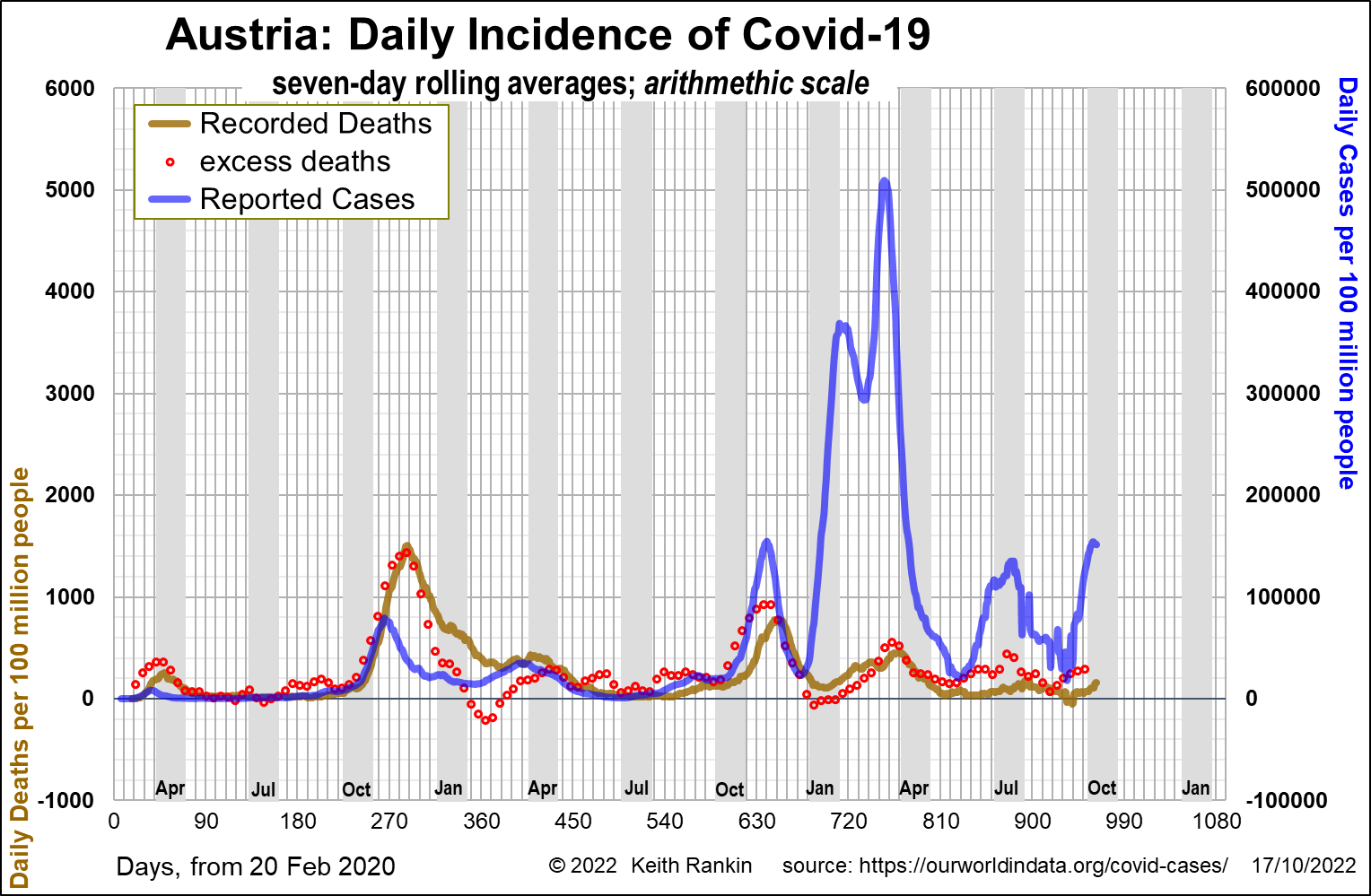
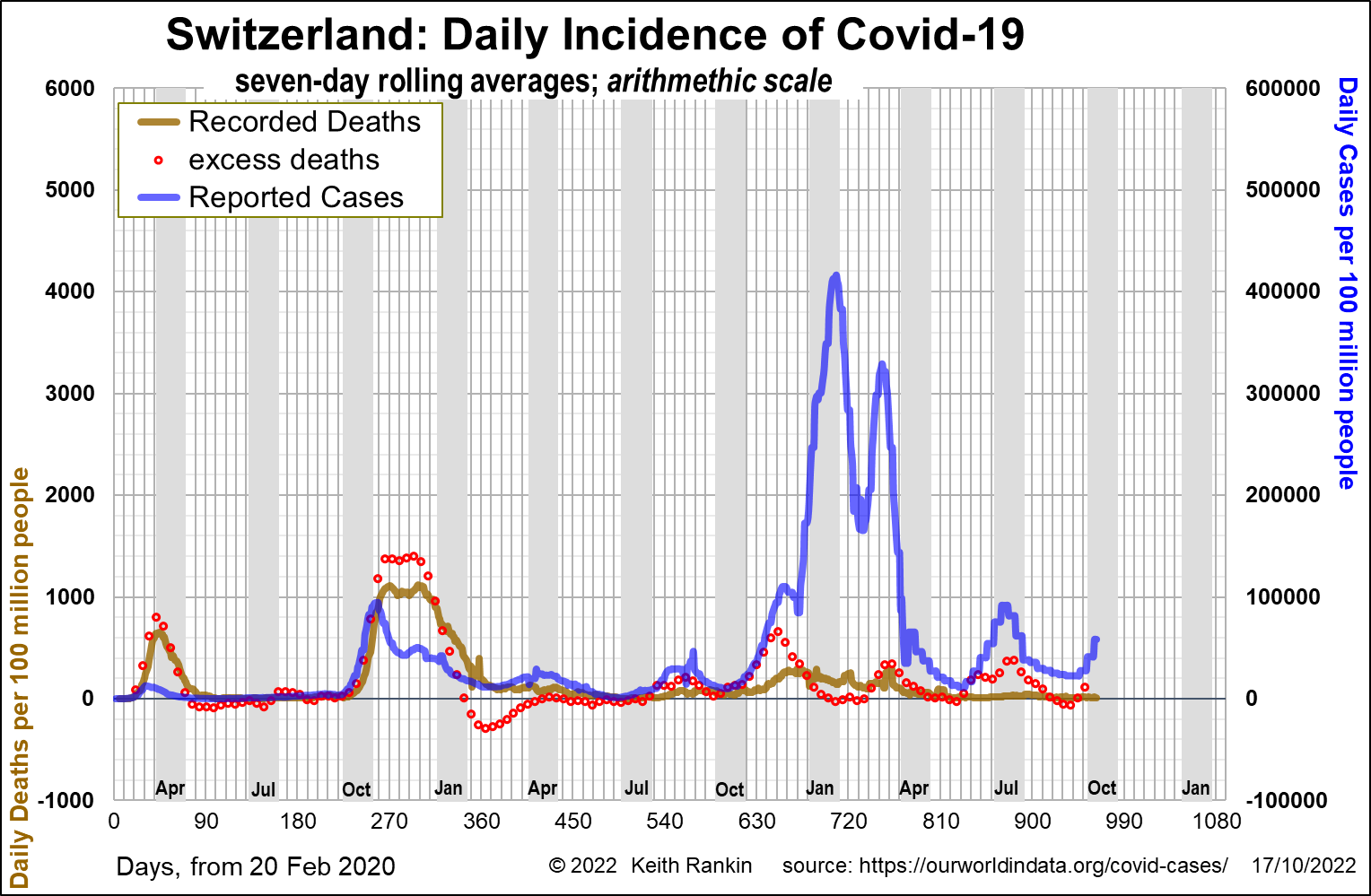
Now the mountain tourist areas, attractive in summer to people who like to walk (and to travel about by train) rather than to swim and sunbathe. Austria shows a pattern very similar to Germany, with a very marked October wave of cases. Austria, like Germany, was a leader in the autumn wave of 2021. Switzerland shows the same patterns as Austria, though with less amplitude. Norway is the most muted of these destinations. Yet its excess deaths are higher relative to reported cases than most of the other countries shown here. Reliable once for its excellent record-keeping, Norway seems to have lost interest in Covid19. My sense is that their autumn deaths will be much as they were in 2021. For Norwegians, October and November 2021 represented their biggest death-wave of the pandemic.
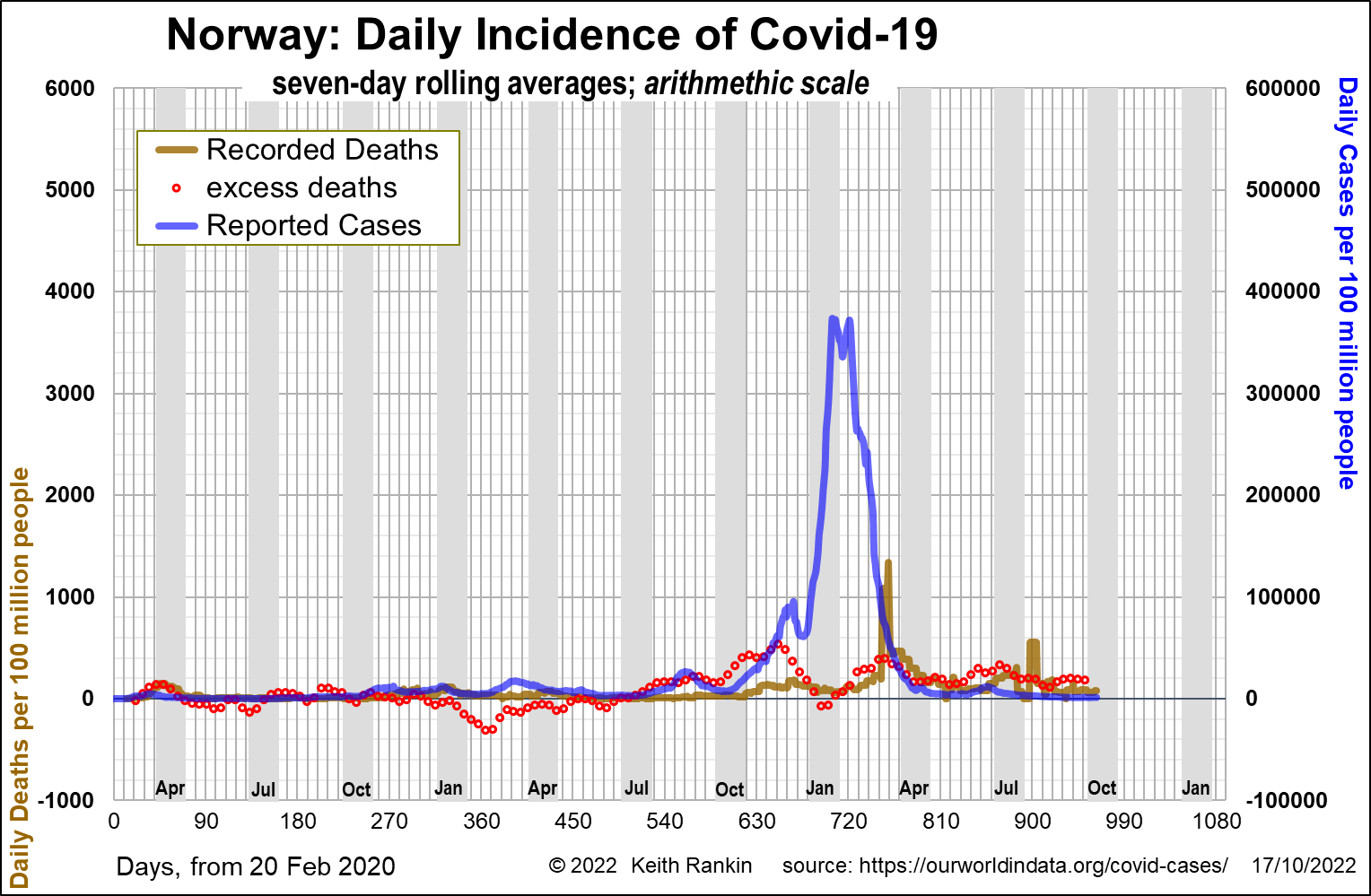
It is important to note that October is a peak month for air travel from Europe and North America to Aotearoa New Zealand. As I have previously noted (see Covid Waves in Europe, Lesson for New Zealand 26 July, and Covid Demography: New Zealand in context of North and West Europe 19 August), New Zealand can expect a late spring or summer covid wave. New Zealand, which has no regular summer seasonal pattern of high deaths, may well in a few months see its highest peak of excess deaths for the whole of the pandemic. Indeed, as has been announced by New Zealand’s Ministry of Health today (RNZ), Covid19 is waxing once again.
As has been the case in 2022 so far (but not in 2020 and 2021) New Zealand’s covid deaths most likely will be nameless and faceless statistics. Out of sight – as reporters, politicians and public servants take their holidays – and out of mind.
*******
Keith Rankin (keith at rankin dot nz), trained as an economic historian, is a retired lecturer in Economics and Statistics. He lives in Auckland, New Zealand.








